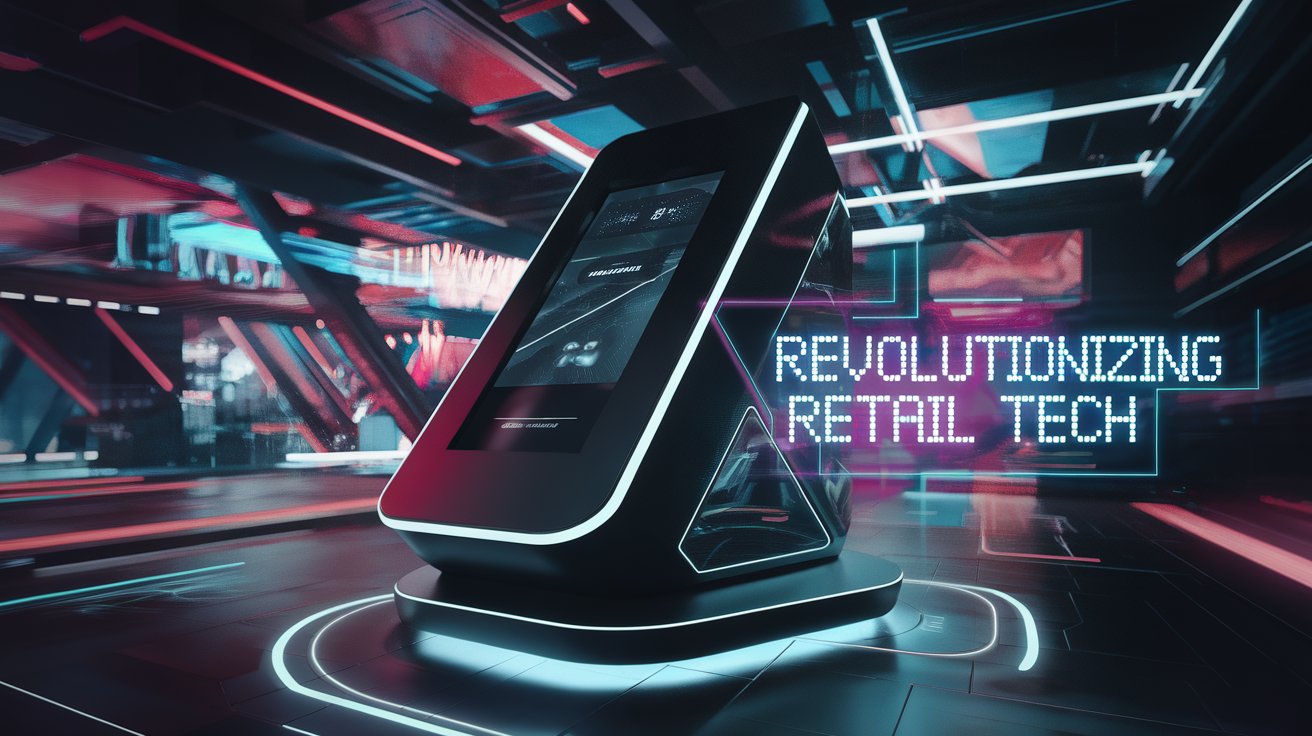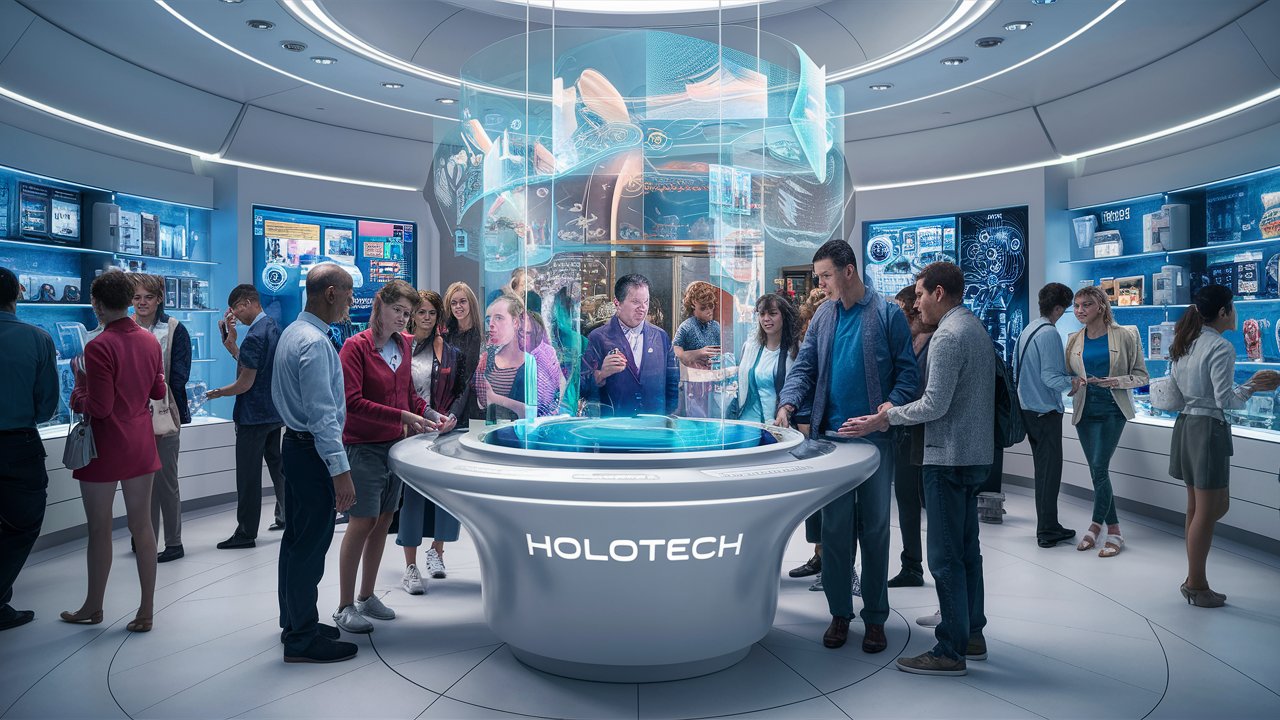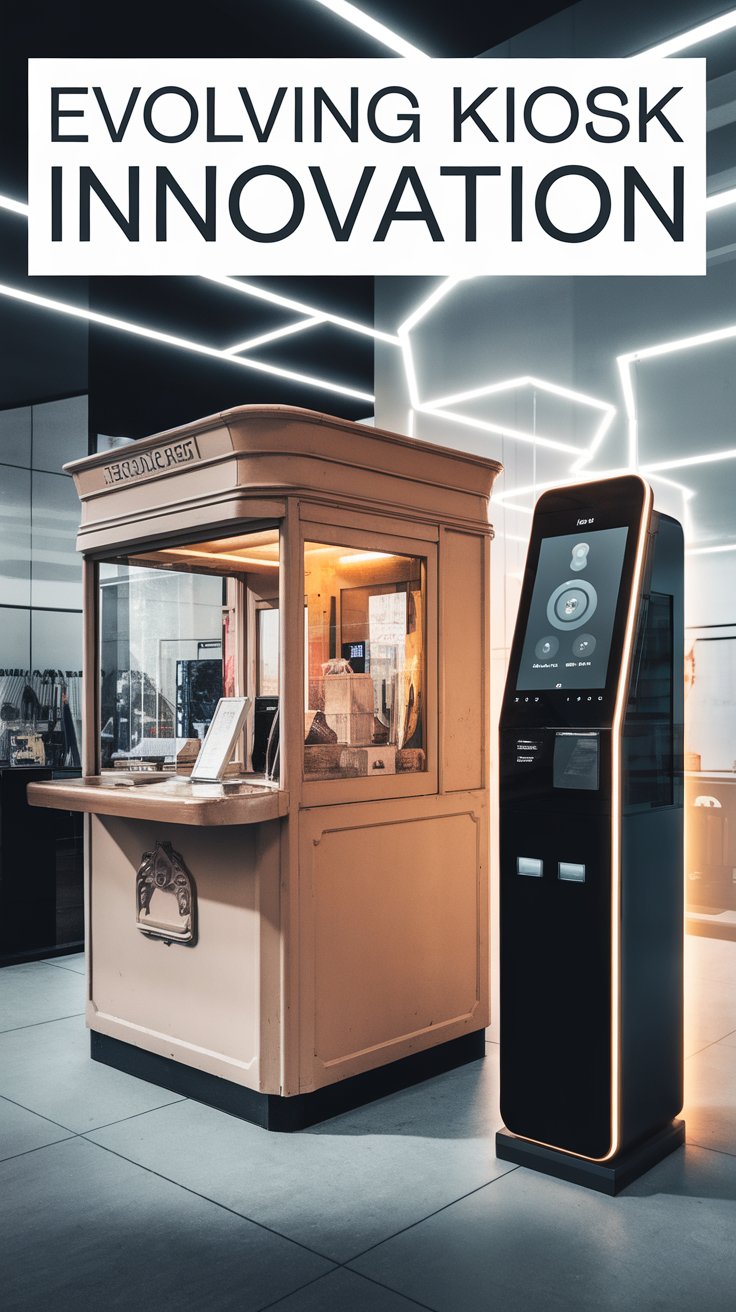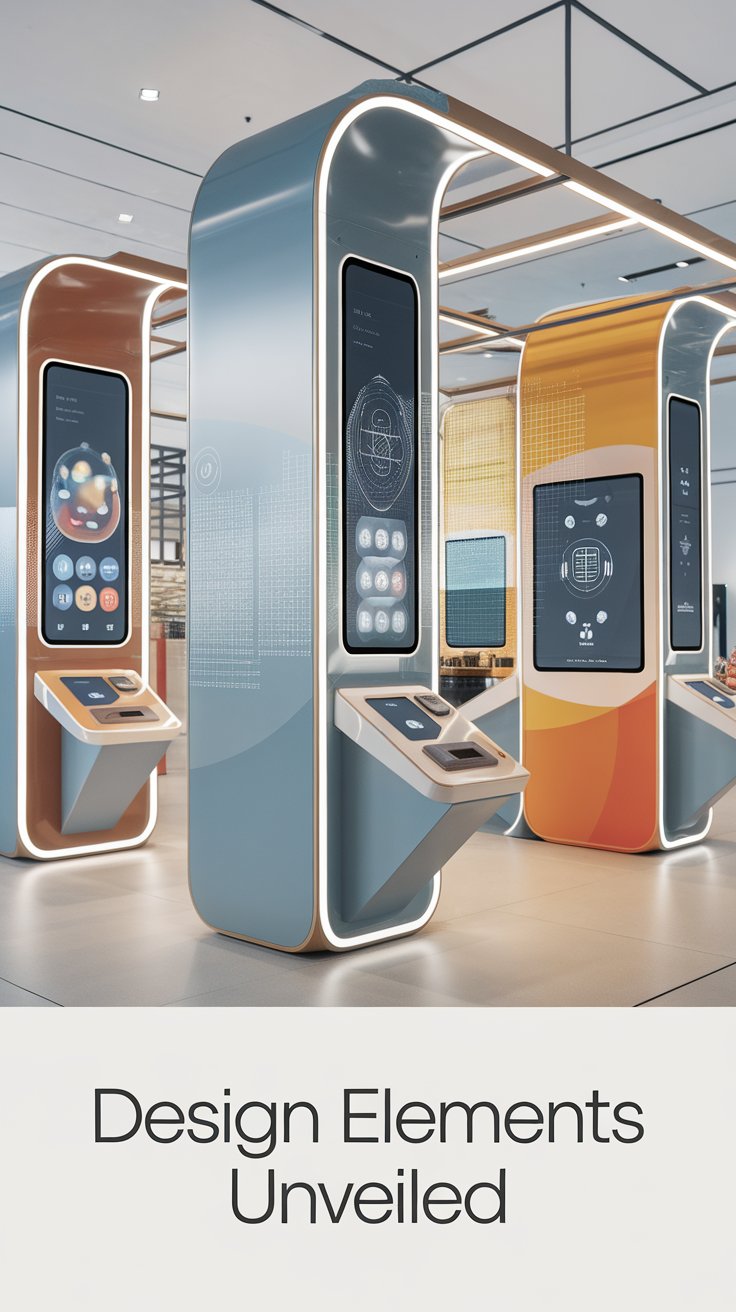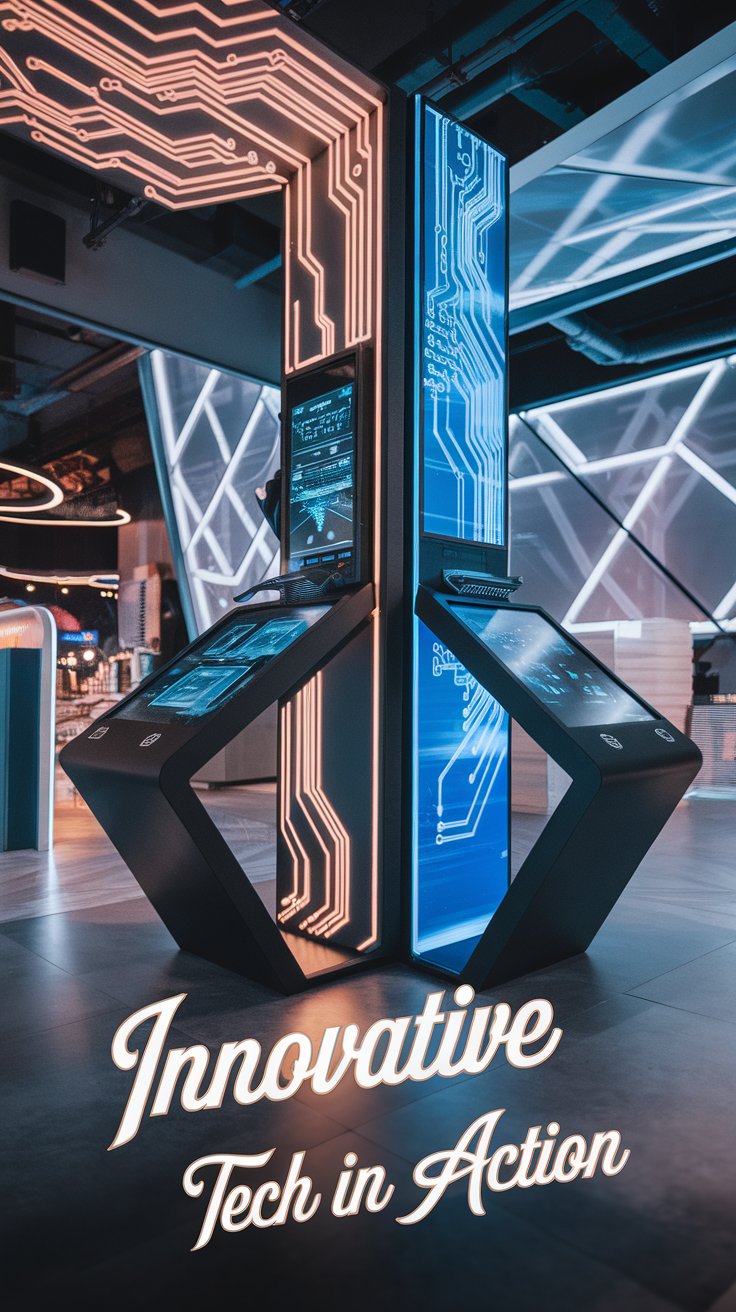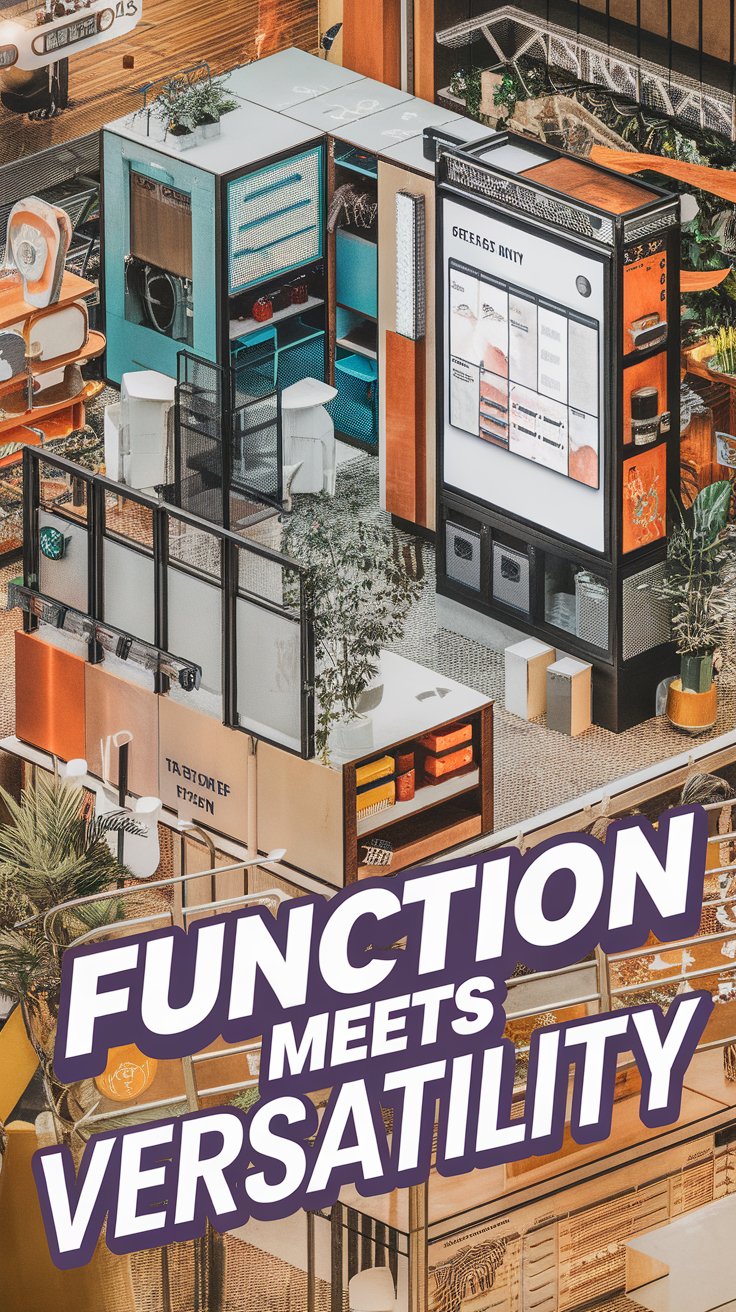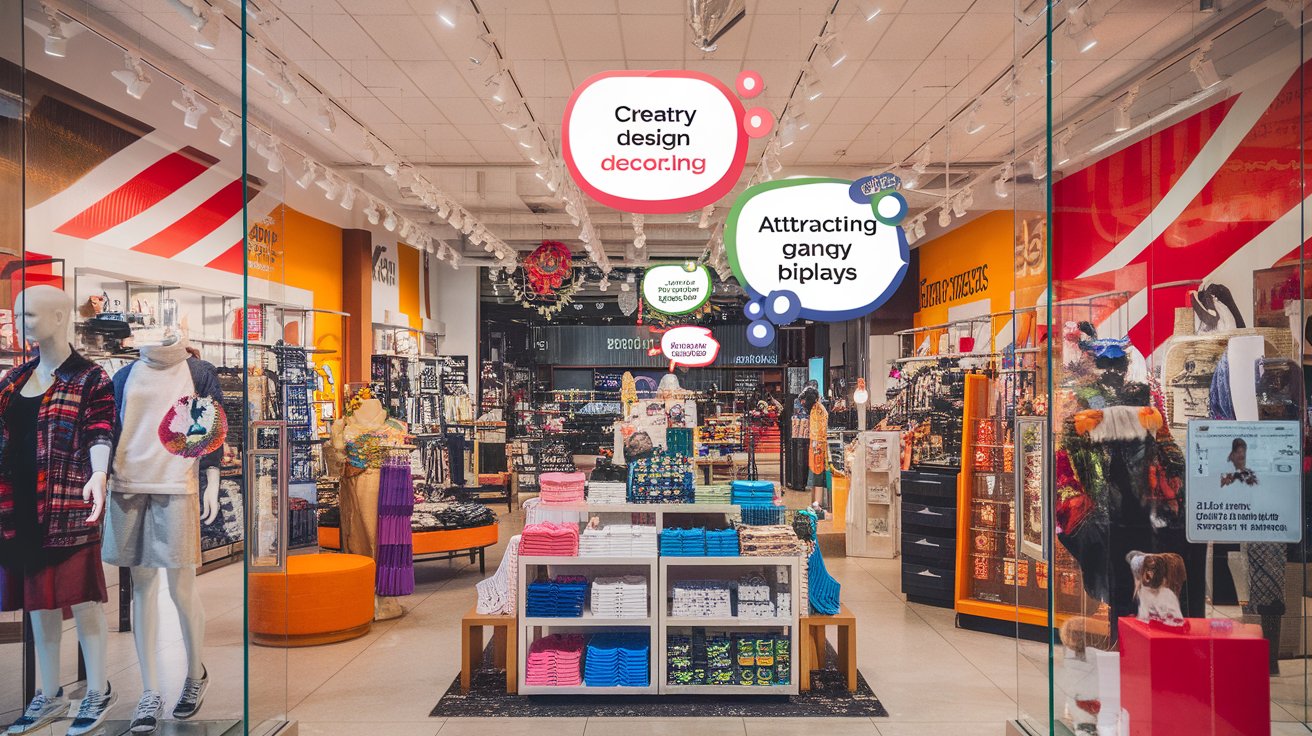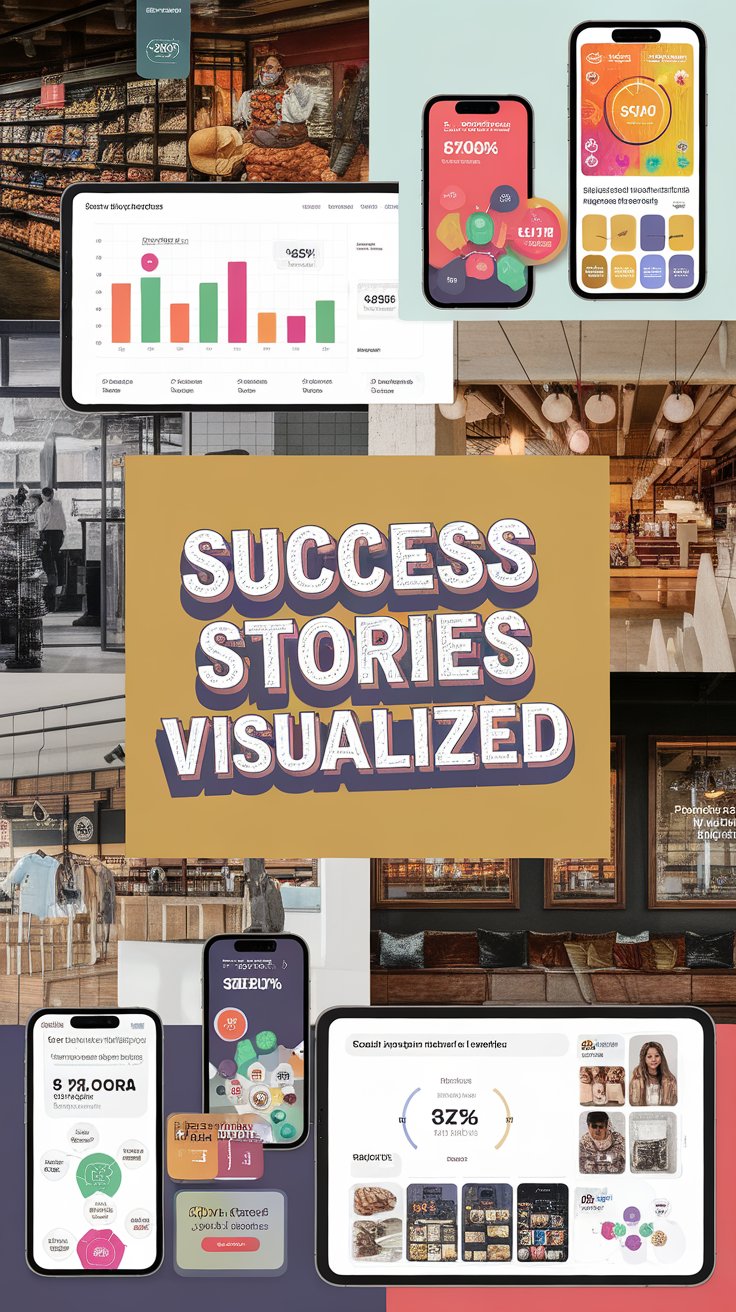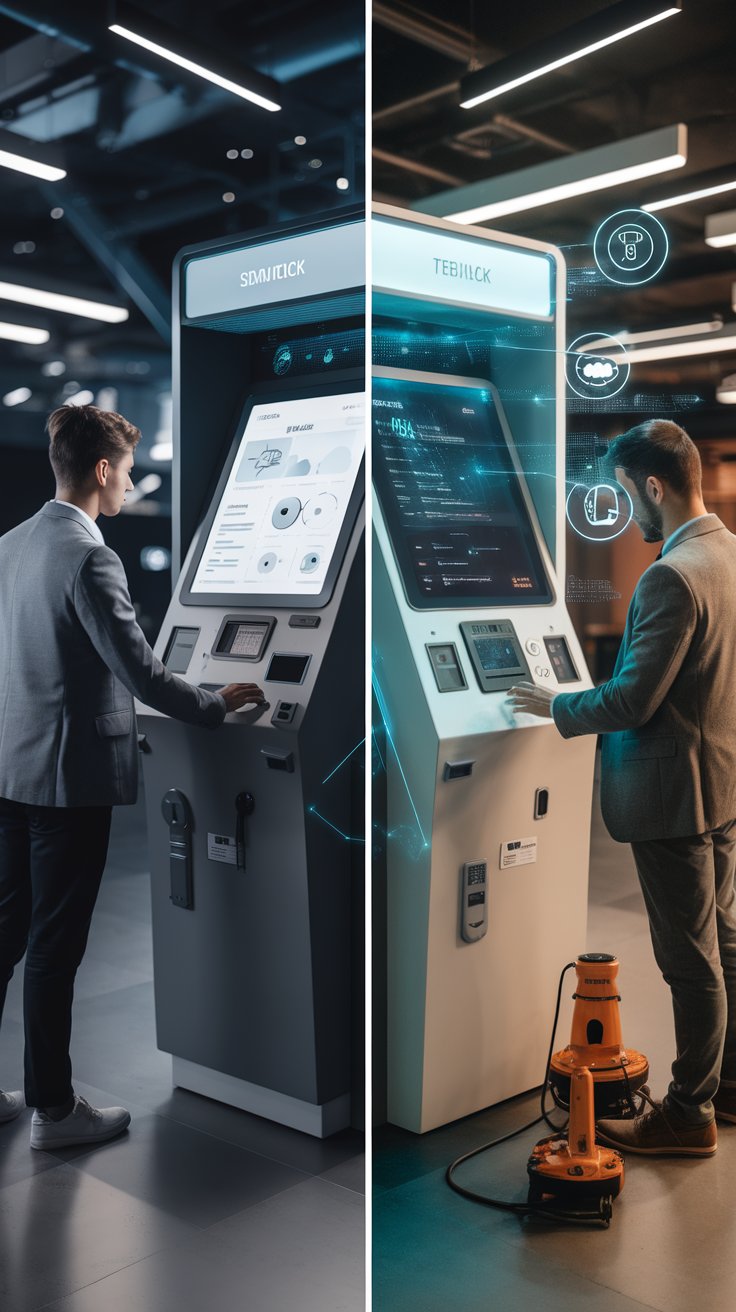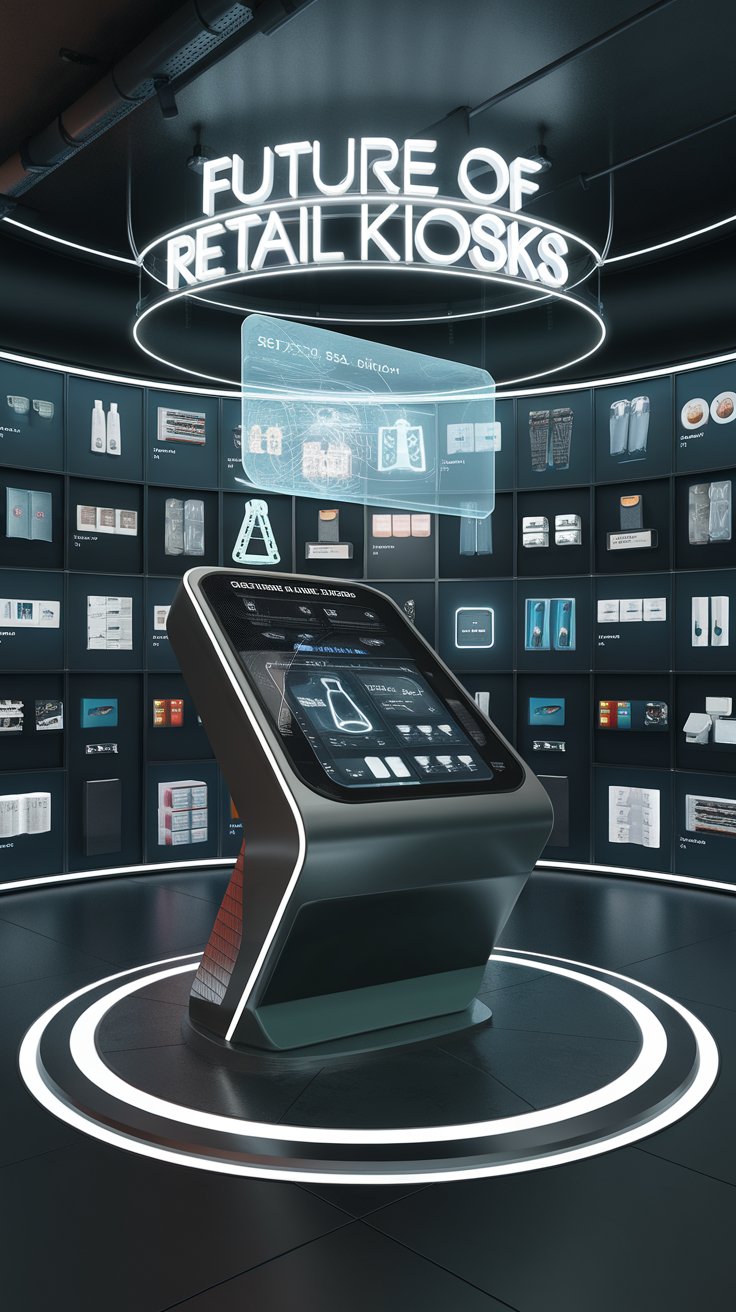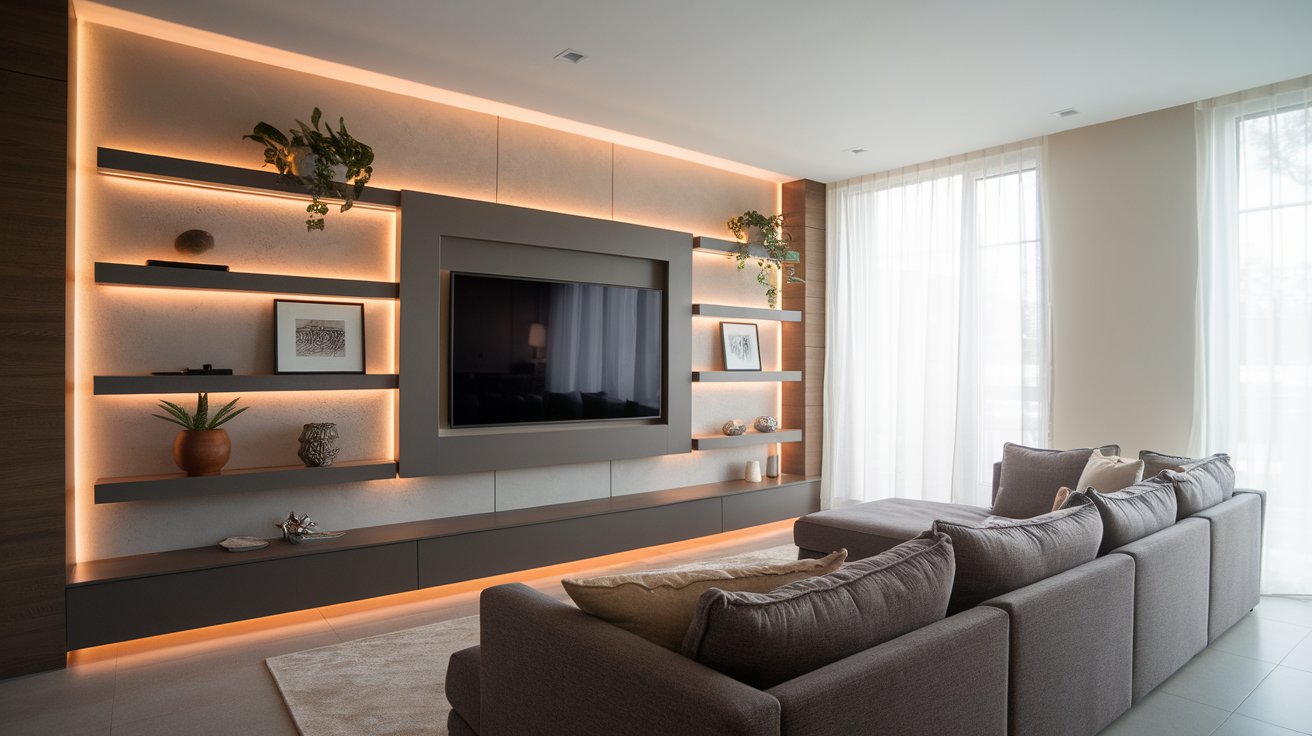Introduction
Kiosk design has evolved significantly over the past decades, particularly in retail tech spaces where the fusion of functionality and aesthetics is paramount. These self-service stations offer an effective way to engage customers while streamlining operations. In today’s fast-paced environment, businesses are increasingly investing in kiosk technology to enhance customer experience, drive sales, and improve service efficiency. This article delves into the contemporary trends in kiosk design, exploring how these innovations are facilitating seamless transactions and enhancing customer interactions.
The emphasis on user-friendly interfaces, adaptable layouts, and advanced technologies make kiosks essential in retail setups. With features ranging from interactive displays to payment processing capabilities, modern kiosks serve various purposes—from check-in points to product information hubs. As retailers strive to create inviting shopping experiences, understanding the latest in kiosk design and application is crucial for maximizing retail tech spaces and meeting customer expectations.
The Evolution of Kiosk Design: From Booths to Multifunctional Interactive Solutions
The history of kiosk design is a fascinating journey that reflects the evolving needs of society and technology. Initially, kiosks were simplistic structures, often taking the form of booths designed for specific functions, such as information dissemination or ticketing. These early versions served a utilitarian purpose, primarily offering a direct point of contact for customers seeking assistance or services.
Over the years, this basic concept underwent significant transformation, influenced by advancements in technology and shifting consumer behaviors. The 1980s marked a pivotal moment in kiosk history with the introduction of digital screens and basic interactivity. These kiosks were primarily seen in retail environments, allowing customers to browse products, check prices, or access promotional information. Businesses started recognizing kiosks as a valuable tool for enhancing customer engagement, reducing wait times, and streamlining operations.
As we entered the 21st century, the advent of touchscreen technology revolutionized kiosk design. The sleek, user-friendly interfaces that emerged opened up new possibilities for interaction. Retailers embraced this innovation, leading to the creation of multifunctional kiosks capable of processing transactions, providing personalized recommendations, and integrating loyalty programs. The seamless blend of technology and design made these kiosks an integral part of the retail experience.
The influence of data analytics defined a new era in kiosk design. Modern kiosks are equipped with sophisticated software that not only enhances the user interface but also gathers customer behavior data. These insights allow retailers to refine product offerings and improve service efficiency, ultimately leading to enhanced customer satisfaction.
The latest trends in kiosk design emphasize aesthetics as much as functionality. With sleek designs and customizable visual branding, kiosks have become stylish fixtures within retail spaces. Retailers understand that a kiosk is not just a point of service but also an extension of their brand identity.
Kiosks are more than just machines; they represent a convergence of technology, design, and user experience. As retail continues to evolve, the journey of kiosk design will undoubtedly keep pace, continually adapting to meet the demands of modern consumers and transforming into even more sophisticated solutions for the retail tech spaces of tomorrow.
Core Elements of Effective Kiosk Design
Designing for the Modern Retail Environment
In the contemporary landscape of retail tech spaces, effective kiosk design stands as a pivotal element for enhancing customer experience and streamlining operations. The success of kiosks hinges on several core design elements, which encompass layout, accessibility, and user interface. Each of these components plays a critical role in crafting an engaging and functional kiosk that meets the needs of today’s consumers.
The layout of a kiosk is fundamental to its effectiveness. A well-thought-out layout facilitates the seamless flow of foot traffic and encourages interaction. Ideally, the kiosk should be strategically placed within the retail space, ensuring visibility while avoiding congestion. The use of modular designs can also be advantageous, allowing for flexibility in configuration as per seasonal demands or promotional events. A clear and open layout draws customers in, encouraging exploration while minimizing the chances of frustration due to overcrowding.
Accessibility is another essential aspect of kiosk design. A truly effective kiosk accommodates all users, including those with disabilities. This includes adhering to regulations such as the Americans with Disabilities Act (ADA) in the United States, which mandates specific height and reach requirements for kiosks. Features such as adjustable screens, audio cues, and tactile buttons can significantly enhance the user experience for individuals with varying abilities and preferences, reinforcing the notion of inclusivity in retail environments.
The user interface (UI) is arguably the heart of kiosk functionality. A well-designed UI not only attracts users but is essential for achieving operational efficiency. Intuitive navigation, responsive touch technology, and aesthetically pleasing visual elements are pivotal in ensuring users can easily understand and interact with the kiosk. Employing familiar icons and concise language can significantly simplify the interaction, reducing the learning curve for users. Interactive elements such as animated instructions or gamified experiences can also help maintain engagement, transforming a simple transaction into a memorable customer encounter.
The interplay of these core elements determines the success of kiosk design in modern retail tech spaces. By meticulously considering layout, accessibility, and user interface, retailers can effectively design kiosks that not only enhance customer satisfaction but also drive sales and foster brand loyalty.
Shaping Competitive Experiences
The integration of these design principles ensures that kiosks remain a valuable asset in the retail environment. As consumer expectations evolve, so too must the design approaches, fostering a culture of continuous improvement and innovation in kiosk design. As the next wave of technological advancements emerges, retailers are poised to leverage these foundational principles for even greater impact.
Technological Innovations in Kiosk Design: Modern Solutions for Retail Tech Spaces
Impact of Advanced Technologies on Kiosk Architecture
In the rapidly transforming landscape of retail, the modernization of kiosk design has become pivotal in enhancing customer experience and streamlining operations. The integration of cutting-edge technologies such as touchscreens, mobile connectivity, and advanced payment solutions has revolutionized how kiosks operate within retail environments. As businesses strive to adapt to ever-changing customer demands, these innovations serve to elevate traditional kiosk functionalities into sophisticated retail solutions.
Touchscreen technology has become a cornerstone of modern kiosk design, offering an intuitive interface that captures customer engagement. Modern kiosks often incorporate high-definition touch displays, allowing for vivid visuals and seamless navigation. The implementation of multi-touch capabilities enables users to interact with content in a more dynamic way, facilitating a self-service experience that reduces wait times and enhances user satisfaction. The sensitivity and responsiveness of these screens have made them indispensable in elevating interaction and guiding customers effortlessly through various processes, such as product selection, information retrieval, and promotional engagements.
Incorporating mobile integration has further transformed kiosk functionality. With the ubiquitous use of smartphones, kiosks are now designed with mobile connectivity features that allow users to scan QR codes or connect via Bluetooth. This connection empowers customers to access personalized offers or store information instantly, thus forging a more cohesive interaction between digital and physical shopping experiences. Additionally, mobile integration enhances convenience for customers who can quickly transition between their devices and the kiosk, facilitating tasks like placing orders or making reservations without needing to rely solely on on-site staff.
Payment solutions have also seen significant advancements, aligning with growing consumer preferences for cashless transactions. Modern kiosks are equipped with secure payment processing technologies, including NFC (Near Field Communication), EMV (Europay, MasterCard, and Visa) compliance, and mobile wallet options such as Apple Pay and Google Wallet. These innovations not only enhance the speed and safety of transactions but also cater to a broad spectrum of consumer preferences, which is increasingly important in today’s retail climate. The integration of these technologies into kiosk design exemplifies a commitment to innovation that addresses the evolving needs of both retailers and their customers.
Driving Efficiency Through Technological Advancements
The synthesis of these technological innovations in kiosk design not only improves user experience but also drives operational efficiency within retail environments. By embracing these advancements, businesses can streamline processes, reduce labor costs, and create an engaging atmosphere that promotes customer loyalty. The future of kiosk design lies in continued innovation, as brands seek to remain competitive and relevant in an ever-changing market.
Designing for Functionality and Versatility
Adapting Kiosks for Varying Retail Environments
Kiosk design in modern retail spaces emphasizes both functionality and versatility, allowing these self-service solutions to cater to a multitude of services, products, and customer interactions. The seamless adaptability of kiosks to different environments—be it a bustling shopping mall, a cozy boutique, or a large warehouse store—enables retailers to enhance customer experiences while optimizing operational efficiency. Notably, the integration of flexible components can facilitate diverse uses, from informational displays and interactive maps to self-checkout and order placements.
Retailers often select kiosk designs that can be customized to their specific requirements. For instance, modular kiosks allow for easy upgrades or alterations to accommodate new technologies such as QR code scanners or advanced payment gateways. These adjustments can be particularly beneficial for retail spaces that frequently change their product offerings or promotional strategies. By ensuring that kiosks are designed for rapid reconfiguration, businesses can not only respond quickly to changing customer desires but also manage their costs more effectively.
Scalability: A Key Consideration in Kiosk Design
Scalability is another vital aspect of contemporary kiosk design. As retailers grow, their needs evolve, necessitating solutions that can scale accordingly. Kiosks that use cloud-based management systems allow for efficient updates and maintenance regardless of the physical location. For example, a retail chain with multiple branches can adjust pricing or inventory across all kiosks simultaneously, thus simplifying the operational process. This centralization eliminates discrepancies and fosters consistency, which is essential for brand integrity.
The scalability of kiosks extends beyond just software updates. The physical structure of kiosks can also accommodate varied sizes and styles—ranging from small countertop models for local artisan shops to large freestanding kiosks for tech giants. The availability of different layouts ensures that businesses can choose a kiosk design that best suits their space constraints and aesthetic preferences. Retailers are compelled to think outside the box, designing kiosks that not only sell products but also reflect their brand ethos, creating a more immersive shopping atmosphere.
As retailers strive to provide unique customer experiences while retaining operational effectiveness, the emphasis on versatile and scalable kiosk designs will continue to shape the landscape of modern retail environments in innovative ways.
Case Studies in Successful Kiosk Implementation: Exploring Impact in Retail Tech Spaces
Kiosk Innovations Transforming Retail Operations
Kiosks have emerged as powerful tools in modern retail environments, driving efficiency and enhancing customer experience. Observing real-world applications reveals how strategic kiosk implementation can yield significant benefits. One standout example is the North Face, which has integrated kiosks into their retail strategy to streamline the shopping experience. These kiosks allow customers to browse the complete product range, check inventory at nearby stores, and place orders online, all without the intervention of sales staff. This not only reduces wait times but also allows store associates to focus on customer engagement, thereby elevating service quality.
Another compelling case comes from McDonald’s, which has revamped its drive-thru operations with the introduction of digital kiosks. These self-service units empower customers to customize their orders interactively, leading to an increase in upsell opportunities. The implementation has resulted in not only reduced order errors but also significantly improved service speed. The kiosks collect valuable data on customer preferences, which McDonald’s uses to refine its menu offerings and promotional strategies. This symbiotic relationship between technology and data enhances overall operational efficiency.
In the apparel sector, Zara’s store format has strategically adopted kiosks to shorten the inventory check-out process. Customers can utilize kiosks to initiate returns or check stock availability of different sizes and styles. That has streamlined operations, allowing the sales staff to concentrate on assisting customers in their shopping experiences, thus maximizing their time and reducing perceived wait times.
Impact Analysis of Kiosk Technology
The infusion of kiosks in various retail contexts has shown impactful results. Retailers have observed a decline in cart abandonment as customers are empowered to make decisions at their own pace. The process encourages spontaneous purchases through enhanced product visibility. Convenience becomes a winning factor: Kiosks facilitate self-service transactions, which are becoming increasingly preferred by consumers seeking efficiency.
The financial implications are noteworthy. Retailers implementing sophisticated kiosk solutions experience elevated sales figures while benefiting from reduced operational costs. Savings emerge from decreased reliance on staff for routine queries and transactions, allowing for strategic reallocation of workforce to higher-value customer interactions. As these case studies illustrate, innovation in kiosk design not only preserves the essence of retail but also rejuvenates it, reflecting the pulse of contemporary consumer behavior.
Challenges and Considerations in Kiosk Design: A Focus on User Acceptance and Technical Feasibility
Understanding Common Obstacles in Kiosk Design
As the adoption of self-service kiosks in retail tech spaces becomes increasingly prevalent, various challenges emerge that can hinder their effectiveness. Businesses must navigate these challenges carefully to ensure that kiosks enhance the customer experience rather than detract from it. A notable issue is user rejection. Despite the convenience of kiosks, there can be a significant barrier to acceptance. Customers may feel intimidated by technology, particularly if interfaces are complicated or lack clear instructions. This apprehension can result in decreased usage, negating the kiosk’s potential advantages. Retailers must prioritize intuitive design elements, including streamlined navigation and accessible language, to overcome this hurdle.
Another critical consideration involves maintenance issues. Kiosks, particularly in high-traffic environments, are prone to wear and tear. Regular servicing is essential to keep units operational and prevent technical difficulties that can disrupt service. Businesses often underestimate the need for comprehensive maintenance strategies, which can lead to increased downtime and diminished customer satisfaction. Establishing a routine inspection and maintenance schedule can alleviate lingering challenges and enhance the overall reliability of kiosk systems.
Technical Difficulties: The Need for Robust Solutions
Technical difficulties represent a significant barrier in kiosk design, influencing user experiences and operational efficiency. From software glitches to hardware malfunctions, these issues can undermine the intended functionality of a kiosk. Retailers must invest in high-quality technology and robust software updates to minimize the likelihood of technical interruptions. Integration with existing systems, such as inventory and payment processing, should be seamless to prevent friction during customer interactions. In this regard, conducting thorough testing prior to deployment can identify potential issues early on and facilitate smoother implementation.
Addressing these challenges in design and deployment can lead to a more engaged customer base and streamline operations in retail tech spaces. As businesses benefit from the capabilities of kiosks, understanding these obstacles will be instrumental in shaping future strategies and ensuring the successful adoption of this technology. Being proactive in design choices and operational planning will ultimately support a stronger return on investment and enhance the customer experience in modern retail environments.
The Future of Kiosk Design in Retail: Innovative Solutions for Modern Retail Environments
Anticipating Tomorrow’s Kiosk Trends
The transformation of kiosk design is set to take on new dimensions as retail environments evolve. Retailers are looking for cutting-edge solutions that not only address existing challenges but also enhance customer experience. Future trends will likely focus on personalization, interactivity, and integration with technological advancements. These elements will form the cornerstone of next-generation kiosk designs in modern retail spaces.
One expected trend is the increased implementation of artificial intelligence (AI) within kiosks. Retailers may integrate AI to create adaptive interfaces that respond to individual customer preferences. For example, kiosks could use facial recognition technology to greet customers by name and offer tailored product recommendations based on past purchases or current promotions. This level of personalization may lead to increased customer engagement and potentially higher sales conversion rates.
The incorporation of augmented reality (AR) in kiosks is likely to rise. Retailers can create immersive experiences through AR, allowing customers to visualize products in their real-world context. Shoppers could use a kiosk to virtually try on clothing or preview a piece of furniture in their home setting. Such innovative engagement strategies will bridge the gap between online and offline shopping experiences, making kiosks integral to a seamless omnichannel strategy.
Another key trend to watch is the focus on sustainability. Retailers are becoming more committed to eco-friendly practices, and kiosk design will reflect this shift. Expect kiosks made from recyclable materials or equipped with energy-efficient technologies. Additionally, features such as QR codes that link to digital product information or eco-friendly initiatives will enhance customer education and engagement while promoting sustainability.
Privacy concerns will also drive design decisions in the future. As kiosks evolve to use more personal data, retailers will need to implement robust security measures. Transparency regarding data usage and privacy policies will likely become a selling point. Kiosks may include clear visual cues about data collection practices, reassuring customers that their information is protected while still providing a personalized experience.
Integration with Retail Ecosystems
The future of kiosk design will not be about isolated units but will focus on creating cohesive retail ecosystems. Kiosks are anticipated to communicate seamlessly with other digital platforms, including mobile apps and e-commerce sites. This integrated approach allows for synchronized inventory management, real-time data analytics, and improved customer service experiences across channels.
The future of kiosk design in retail is set to be a dynamic fusion of technology, experience, and sustainability. Retailers can expect cutting-edge solutions that not only meet customer needs but also elevate their overall shopping experience. As many retailers look to the future, embracing these trends will be vital to staying competitive in an ever-changing industry landscape.
Conclusions
In summary, the landscape of kiosk design in retail tech spaces is rapidly advancing, driven by consumer expectations for convenience and personalized experiences. Retailers are recognizing the importance of integrating these innovative solutions into their stores, as they not only boost operational efficiencies but also enhance customer satisfaction. By adopting advanced kiosk technologies, businesses can significantly improve their service models and keep up with the competition in the retail sector.
As the market continues to evolve, staying informed about emerging trends in kiosk design will be key for retailers looking to attract and retain customers. By prioritizing thoughtful design and functionality in their kiosk solutions, businesses can ensure they provide a cutting-edge retail experience that resonates with tech-savvy consumers.

